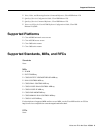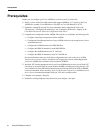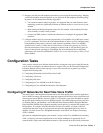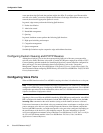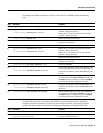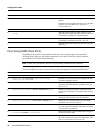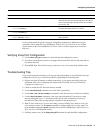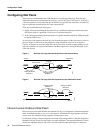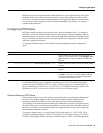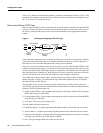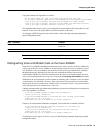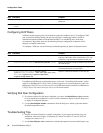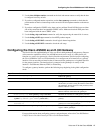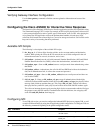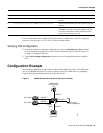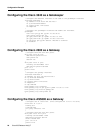
Configuring Dial Peers
Voice over IP for the Cisco AS5800 13
POTS peers associate a telephone number with a particular voice port so that incoming calls for that
telephone number can be received and outgoing calls can be placed. VoIP peers point to specific
devices (by associating destination telephone numbers with a specific IP address) so that incoming
calls can be received and outgoing calls can be placed. Both POTS and VoIP peers are needed to
establish VoIP connections.
Configuring POTS Peers
POTS peers enable incoming calls to be received by a particular telephony device. To configure a
POTS peer, you need to uniquely identify the peer (by assigning it a unique tag number), define its
telephone numbers, and associate it with a voice port through which calls will be established. Under
most circumstances, the default values for the remaining dial peer configuration commands will be
sufficient to establish connections.
To configure a POTS dial peer, use the following commands beginning in global configuration
mode:
For additional POTS dial-peer configuration commands, refer to the “Voice-Related Commands”
section of the Cisco IOS Release 12.0 Voice, Video, and Home Applications Command Reference,
the Cisco IOS Release 12.0(3)T Voice over IP for the Cisco AS5300 feature module, and the Cisco
IOS Release 12.0(3)T Service Provider Features for Voice over IP feature module.
Outbound Dialing on POTS Peers
When a router receives a voice call, it selects an outbound dial peer by comparing the called number
(the full E.164 telephone number) in the call information with the number configured as the
destination pattern for the POTS peer. The router then strips out the left-justified numbers
corresponding to the destination pattern matching the called number. If you have configured a prefix,
the prefix will be put in front of the remaining numbers, creating a dial string, which the router will
then dial. If all numbers in the destination pattern are stripped-out, the user will receive (depending
on the attached equipment) a dial tone.
For example, suppose there is a voice call whose E.164 called number is 1 310 767-2222. If you
configure a destination-pattern of “1310767” and a prefix of “9,” the router will strip out “1310767”
from the E.164 telephone number, leaving the extension number of “2222.” It will then append the
Step Command Purpose
1
Router(config)# dial-peer voice
number pots
Enters the dial peer configuration mode to configure a
POTS peer. The number value of the dial-peer voice
pots command is a tag that uniquely identifies the
dial peer.
2
Router(config-dial-peer)# destination-pattern string
Defines the telephone number associated with this POTS
dial peer.
3
Router(config-dial-peer)# port shelf/slot/port:D
Associates this POTS dial peer with a specific logical dial
interface.
4
Router(config-dial-peer)# prefix string
(Optional) Specifies the prefix for this POTS dial peer.
The prefix string value is sent to the telephony interface
first, before the telephone number (destination pattern)
associated with this dial peer is sent.



